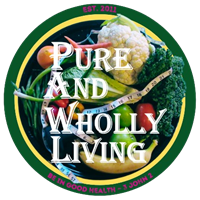March is National Nutrition Month, an annual campaign established by the Academy of Nutrition and Dietetics to encourage informed food choices and healthy eating habits. Food science studies continue to show that eating spinach helps improve health and reduce the risk of many health issues, from cancer to memory loss to strokes.
Here is just a short list of what makes spinach a SuperFood!
• Reduces the risk of cardiovascular disease and strokes
• Protects against the occurrence of cancer, including colon, lung, skin, oral, stomach, ovarian, prostate, and breast cancer
• Helps regulate blood pressure
• Builds muscle and strong bones
• Helps prevent memory loss and cognitive decline
• Protects against skin problems such as eczema and psoriasis
• Acts as a natural diuretic and laxative
• Performs as an anti-inflammatory
• Reduces migraines
• Prevents cataracts and macular degeneration
What’s In Spinach?
Well, as a very well-known cartoon character would say right after eating spinach which granted him superhuman strength, allowing him to overcome any obstacle or opponent (namely his arch-rival and nemesis, Bluto)…
“I’m strong to the finich, cause I eats me spinach, I’m Popeye the Sailor Man!”
Here’s why you should do like Popeye, too:
- Spinach is an extremely nutrient-rich vegetable. It packs high amounts of carotenoids, vitamin C, vitamin K, folic acid, iron, and calcium.
- Spinach is low in carbs but high in insoluble fiber. This type of fiber may benefit your digestion.
- Spinach boasts many plant compounds that can improve health, such as lutein, kaempferol, nitrates, quercetin, and zeaxanthin.
- Cooked spinach, per cup, provides 129% of the recommended daily vitamin A for women and 105% of the suggested amount for men.
- Spinach also provides more of the minerals magnesium, potassium and iron than cabbage, lettuce or broccoli.
One of the more exciting recent discoveries about what’s in spinach is the presence of glycoglycerolipids. You may not have heard glycoglycerolipids before because people are just starting to talk about them. Glycoglycerolipids are the key players in plant photosynthesis, and new research shows that they can prevent inflammation and damage in the digestive tract. What else are you getting in a cup of spinach? Here’s a more detailed look at the nutrients in a 1-cup serving of spinach and how it stacks up by percentage of Daily Values (DV):
- Vitamins:
- Vitamin A: 16% DV
- Vitamin B6: 15% DV
- Vitamin B1 (Thiamin): 10% DV
- Vitamin B2 (Riboflavin): 10% DV
- Vitamin B3 (Niacin): 5% DV
- Vitamin B5 (Pantothenic acid): 1% DV
- Vitamin B9 (Folate): 15% DV
- Vitamin C: 9% DV
- Vitamin K: 121% DV
- Minerals:
- Iron: 15% DV
- Potassium: 11% DV
- Calcium: 20% DV
- Magnesium: 6% DV
- Other:
- Fiber: 16% DV
- Calories: 7
- Carbohydrates: 49% DV
- Fat: 12% DV
- Protein: 39% DV
Did you know?
- Chopping up spinach and adding it to a smoothie can actually increase the bioavailability of lutein and other compounds.
- Spinach pairs very well with Olive Oyl! Why do you think Popeye loved it so much?!?
You can sauté spinach in a little bit of extra virgin olive oil, or eat it raw with a little oil drizzled on top.
